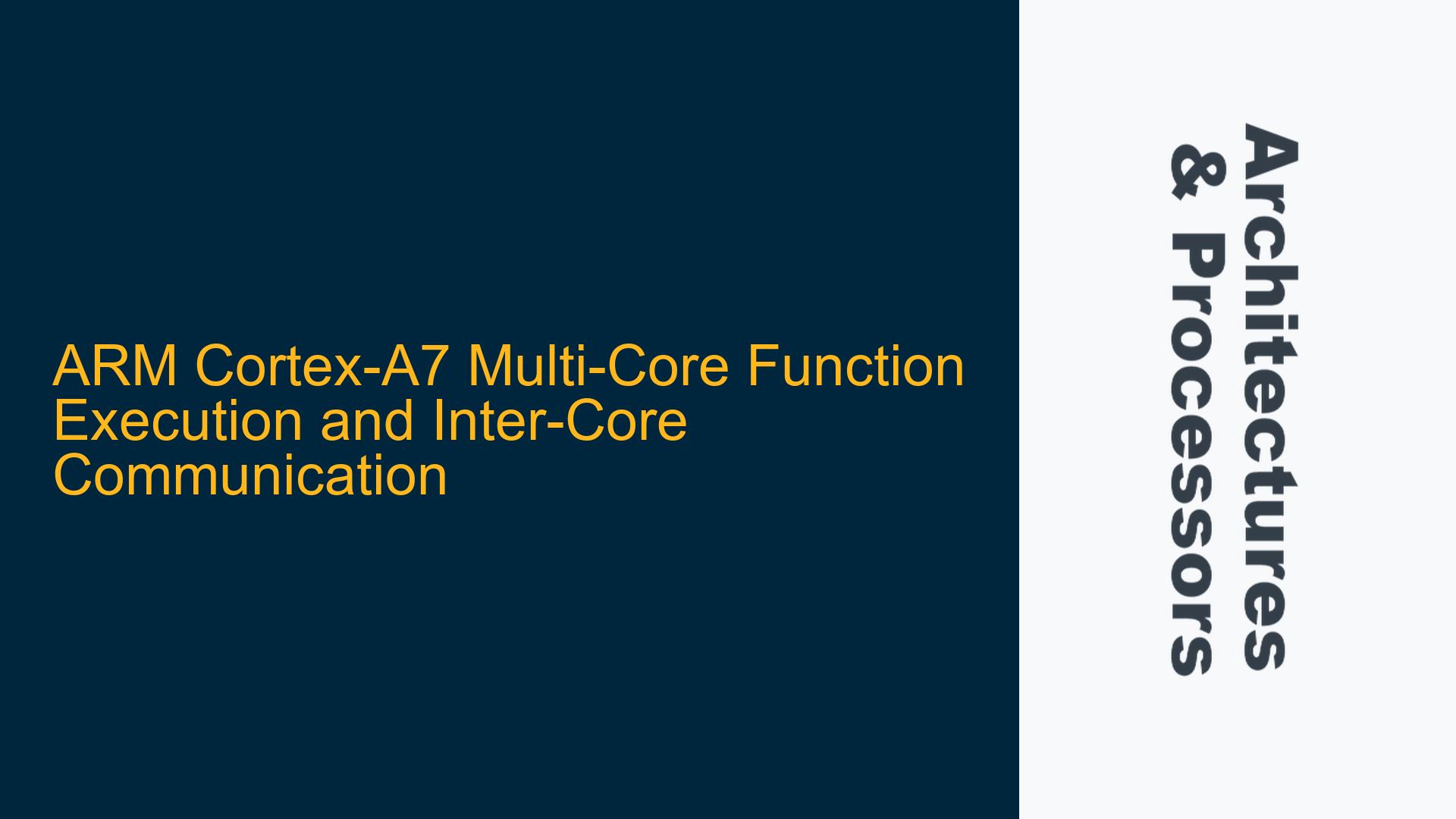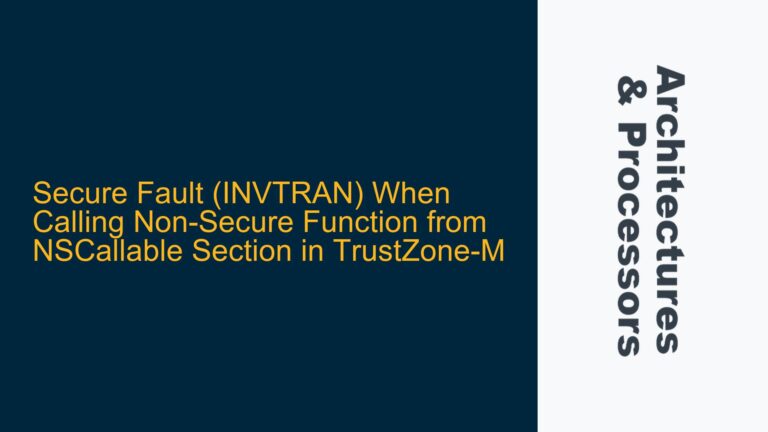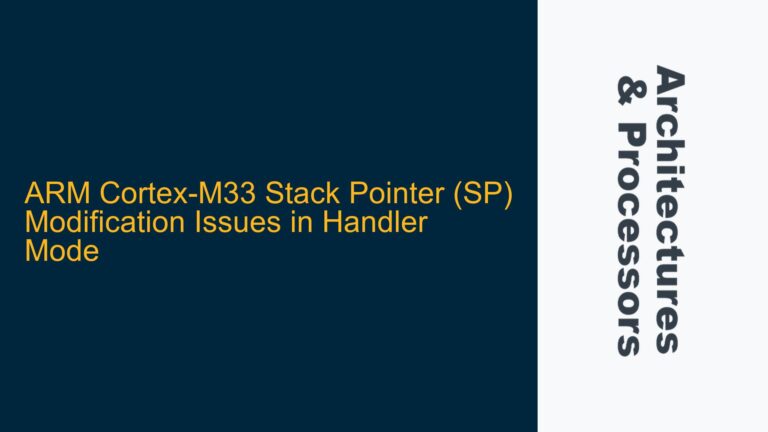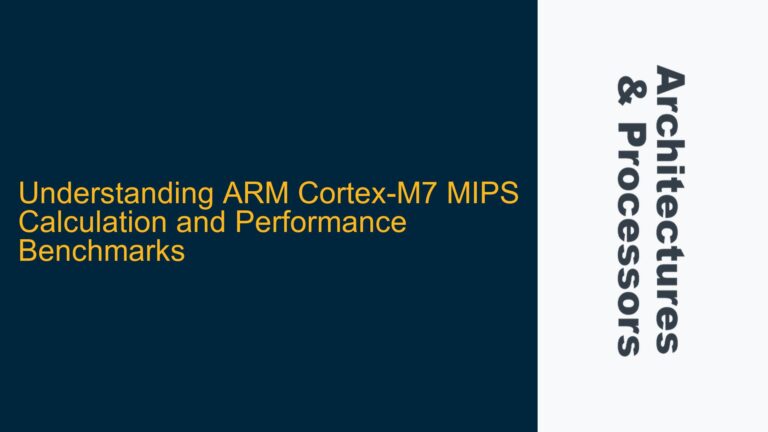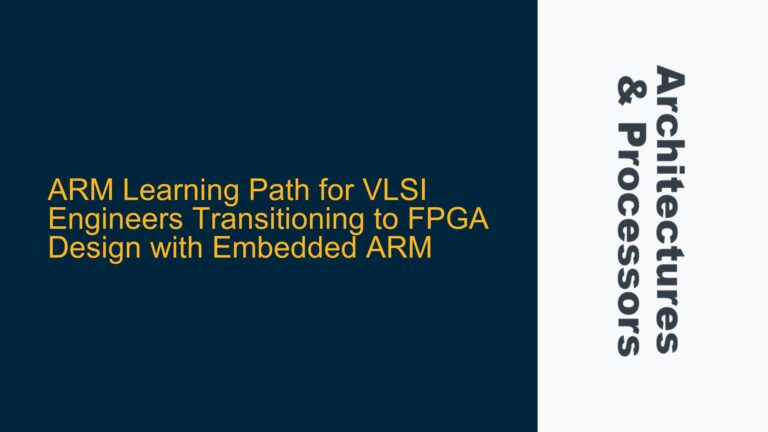ARM Cortex-A7 Multi-Core Function Execution Challenges
The ARM Cortex-A7 processor, known for its energy efficiency and scalability, is widely used in multi-core configurations. One common challenge developers face is orchestrating the execution of specific functions across multiple cores. In this scenario, the goal is to assign four distinct functions to four cores, ensuring each core executes its designated function independently. This requires a deep understanding of the Cortex-A7 architecture, inter-processor communication (IPC) mechanisms, and the memory model.
The Cortex-A7 core does not allow one core to directly write to the registers of another core. This limitation necessitates the use of software infrastructure to coordinate function execution across cores. The primary challenge lies in ensuring that each core jumps to the correct memory address where its designated function resides and begins execution without conflicts or race conditions. This involves careful management of memory addresses, inter-core communication, and synchronization mechanisms.
To achieve this, developers must understand the role of specific registers, memory-mapped I/O, and the use of interrupts or events to signal cores to begin execution. Additionally, the Cortex-A7’s cache coherency and memory barriers must be considered to ensure that all cores have a consistent view of memory and that data structures used for IPC are properly synchronized.
Core Isolation and Inter-Processor Communication Mechanisms
The Cortex-A7 architecture enforces strict isolation between cores, meaning that no core can directly access or modify the registers of another core. This isolation is a fundamental design principle that ensures stability and security in multi-core systems. However, it also introduces complexity when attempting to coordinate function execution across cores.
To overcome this limitation, developers must rely on inter-processor communication (IPC) mechanisms. These mechanisms allow cores to exchange information and coordinate their actions. Common IPC techniques include the use of shared memory, interrupts, and broadcast events. Shared memory acts as a medium for cores to exchange data, while interrupts and events serve as signals to prompt specific actions.
In the context of assigning functions to cores, shared memory can be used to store the addresses of the functions each core should execute. When a core is ready to begin execution, it reads the function address from shared memory and jumps to that location. Interrupts or events can be used to signal cores to start execution, ensuring that all cores begin their tasks in a coordinated manner.
The Cortex-A7’s memory model also plays a crucial role in IPC. The processor uses a unified memory system, meaning that all cores share the same address space. However, each core has its own cache, which can lead to inconsistencies if not properly managed. To ensure cache coherency, developers must use memory barriers and cache maintenance operations. These operations ensure that all cores have a consistent view of memory and that data structures used for IPC are properly synchronized.
Implementing Function Execution Across Cores with Synchronization
To implement function execution across multiple cores on the Cortex-A7, developers must follow a structured approach that includes setting up shared memory, configuring interrupts or events, and ensuring proper synchronization. The following steps outline this process in detail.
First, developers must allocate a shared memory region that all cores can access. This region will store the addresses of the functions each core should execute. For example, if there are four cores and four functions, the shared memory region could be organized as follows:
| Core ID | Function Address |
|---|---|
| 0 | Address of Func1 |
| 1 | Address of Func2 |
| 2 | Address of Func3 |
| 3 | Address of Func4 |
Each core reads its designated function address from the shared memory region. To ensure that the addresses are correctly written and read, developers must use memory barriers. Memory barriers prevent reordering of memory operations, ensuring that each core sees the correct function address.
Next, developers must configure interrupts or events to signal cores to begin execution. The Cortex-A7 supports several types of interrupts, including software-generated interrupts (SGIs) and inter-processor interrupts (IPIs). SGIs are particularly useful for signaling specific cores to start execution. For example, Core 0 can generate an SGI to signal Core 1 to begin executing its designated function.
To generate an SGI, developers must write to the Generic Interrupt Controller (GIC) registers. The GIC is responsible for managing interrupts in multi-core systems. The following steps outline how to configure an SGI:
- Determine the target core(s) for the SGI. Each core has a unique ID, which is used to specify the target of the interrupt.
- Write the SGI ID and target core(s) to the GIC’s Software Generated Interrupt Register (GICD_SGIR). The SGI ID is a number between 0 and 15, and the target cores are specified using a bitmask.
- The GIC delivers the SGI to the target core(s), triggering the interrupt handler.
The interrupt handler on the target core reads the function address from shared memory and jumps to that location to begin execution. To ensure that the jump is performed correctly, developers must use the appropriate assembly instructions. For example, the following assembly code demonstrates how a core can jump to a function address stored in a register:
LDR R0, [R1] ; Load the function address from shared memory into R0
BX R0 ; Branch to the address in R0
In this example, R1 contains the address of the shared memory location where the function address is stored. The LDR instruction loads the function address into R0, and the BX instruction branches to that address.
Finally, developers must ensure proper synchronization between cores. This includes using memory barriers to prevent reordering of memory operations and cache maintenance operations to ensure cache coherency. The Cortex-A7 provides several instructions for managing memory barriers and cache operations, including Data Synchronization Barrier (DSB), Instruction Synchronization Barrier (ISB), and Data Memory Barrier (DMB).
For example, the following assembly code demonstrates how to use a DSB to ensure that all memory operations are completed before proceeding:
DSB ; Data Synchronization Barrier
By following these steps, developers can successfully implement function execution across multiple cores on the Cortex-A7. This approach ensures that each core executes its designated function independently and that all cores are properly synchronized.
In conclusion, orchestrating function execution across multiple cores on the ARM Cortex-A7 requires a deep understanding of the processor’s architecture, IPC mechanisms, and synchronization techniques. By carefully managing shared memory, configuring interrupts, and ensuring proper synchronization, developers can achieve efficient and reliable multi-core function execution.
